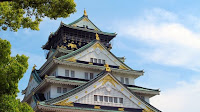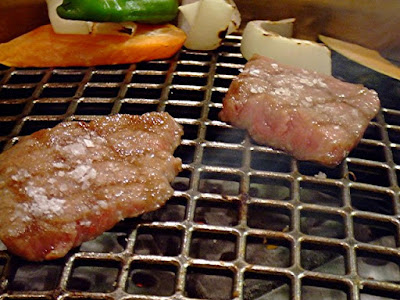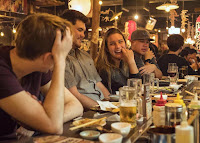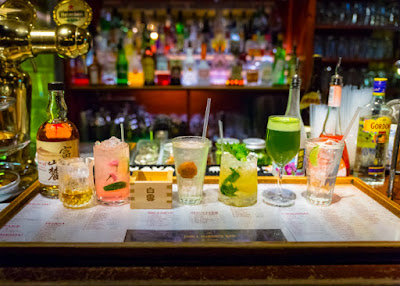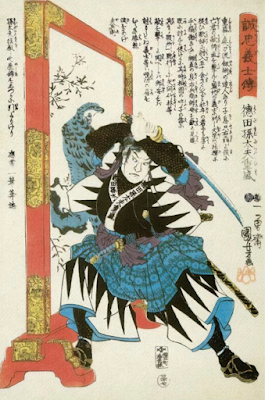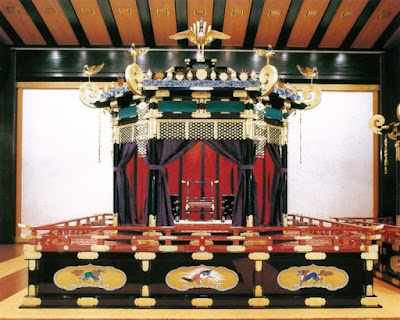To satisfy your cravings and save your wallet too, we suggest that you learn to make sushi at home. You will just need a few basic ingredients to get started and trust me, it’s not as hard as you think. The ingredients can be sourced from any Asian grocery store and most of them have a good shelf life. The sushi rolls may not turn out restaurant-like on the first attempt, but you will love the fruits of your labor. Here are our top 5 tips to help you in this endeavor.
5 Tips on Making Sushi at Home
1. Cook the Sushi Rice Perfectly
Sushi rice is one of the most important ingredients that lends a body and texture to the dish so don’t ignore it. Always buy the shinmai variety (new crop) short-grain Japanese rice to get the perfect restaurant like flavor and taste. Avoid using medium or long-grain rice as they will not yield the same results. After you have cooked rice, let it cool down a bit before you season it with vinegar, sugar, and salt.
 |
| Photo by: James |
2. Always Use Sushi-grade Fish
When using raw fish for sushi, always buy sushi-grade fish that has been carefully handled from the point of catch to the point of sale. Always source fish from a trusted fishmonger and ask questions when in doubt. If you don’t plan on preparing sushi immediately, store the fish in a vacuum-sealed bag inside the freezer. Be very careful with handling, storing, and using raw fish as any bit of carelessness can lead to food-borne sickness.
 |
| Photo by: cottonbro on Pexels |
3. Try Vegetarian or Cooked Sushi Options
If you can’t find sushi-grade fish near you, there are many cooked sushi options to try from. For example, you can enjoy making California sushi roll, which is both delicious and easy to prepare at home. You will need imitation crab meat to use as fillings and they are easily available in any Asian grocery store. You may also make vegetarian sushi rolls using fresh fruits and vegetables such as seedless cucumber, avocado, asparagus, shitake mushrooms, and tofu.
 |
| Photo by: James |
4. Try Sushi Making Kits and Tools
If you are a sushi enthusiast and would love to enjoy making restaurant-like rolls at home then we suggest that you invest in a few essential tools to help you. A bamboo mat will help you give a perfect compact shape to your sushi rolls without the ingredients falling apart. A good sushi knife also comes handy to cut raw meat and vegetables with precision. You may also invest in some of the specially designed sushi roll kits and molds that can help you make a lot of sushi quickly for a kid’s party.
5. Measure the Ingredients Correctly!
When cooking sushi at home, always use the right measurements depending on the number of people. A sushi roll can be cut into 6 to 8 bite-sized pieces and on average, a person can eat up to a maximum of three sushi rolls. So, cook rice and prepare the meat and vegetables accordingly or else you will end up with a lot of waste after dinner. Don’t forget to store the leftover raw fish immediately and if it has stayed outside for more than 2 hours then discard it as there will be a risk of food poisoning.
Conclusion
Making sushi at home not only saves you from having to shell out a lot of money at fine dining restaurants, but it can also turn out to be a fun activity at home. Every member of the family can come together to prepare the fillings and do the rolling to make their own sushi rolls. If you are a beginner at sushi making, start with the simple and basic recipes and then move on to the more complex choices including various ingredients and inside-out style.
About the Author
Today's guest post is from sushi blogger, James.
James is a sushi enthusiast and owner of a sushi blog called Easy Homemade Sushi. He has been to Japan several times and loves Japanese food and culture. He is also a passionate writer and likes to share his experiences and knowledge through his blog.



